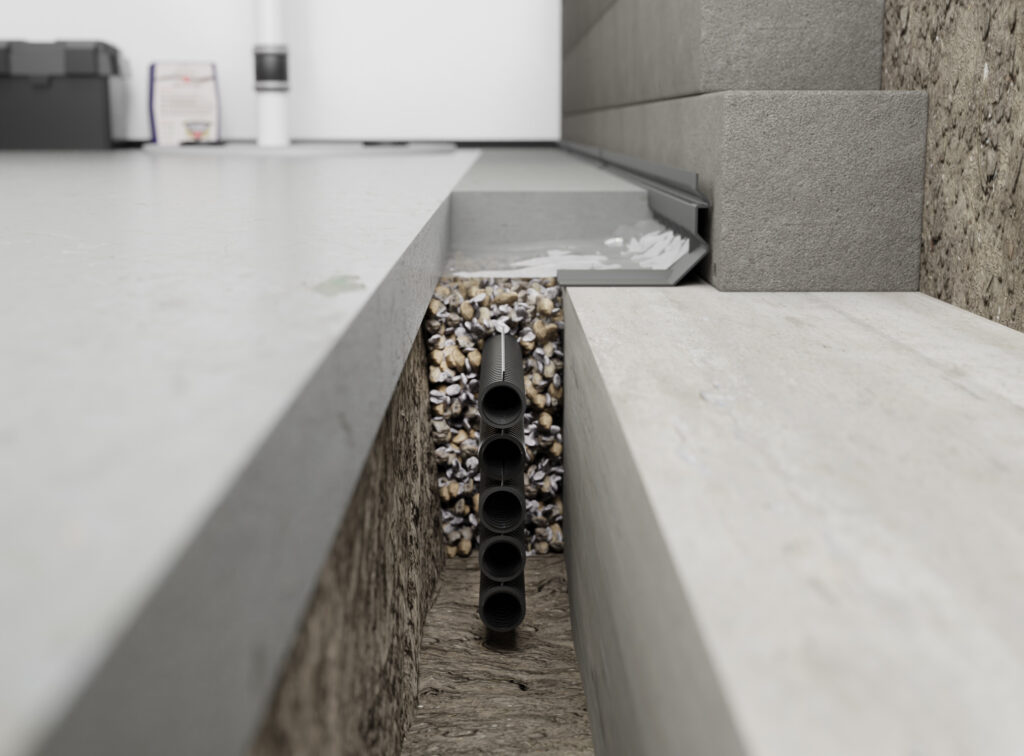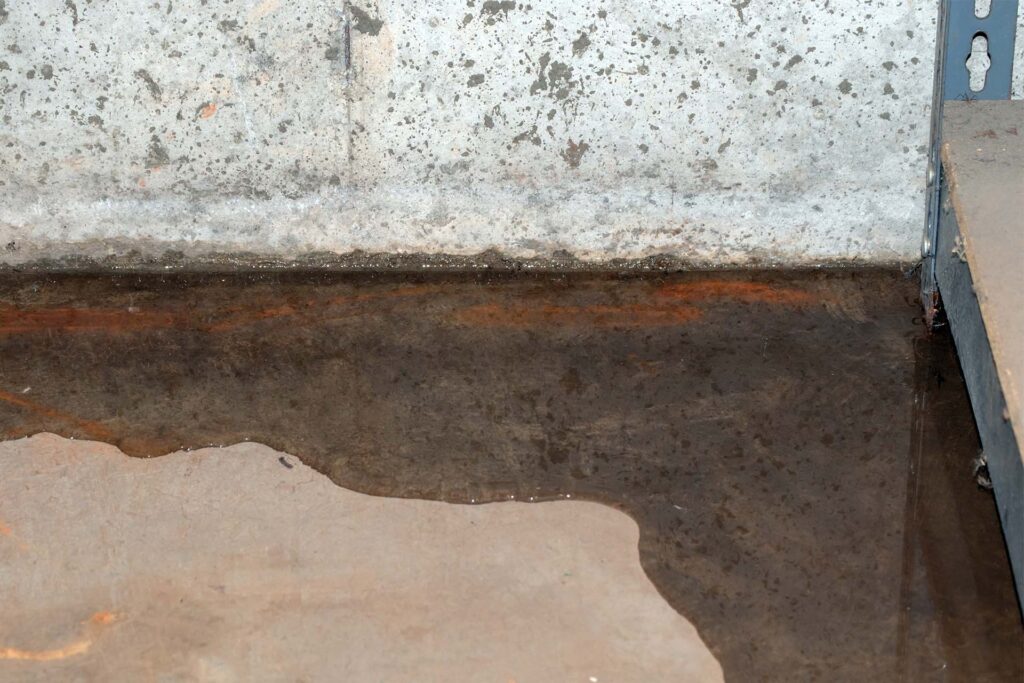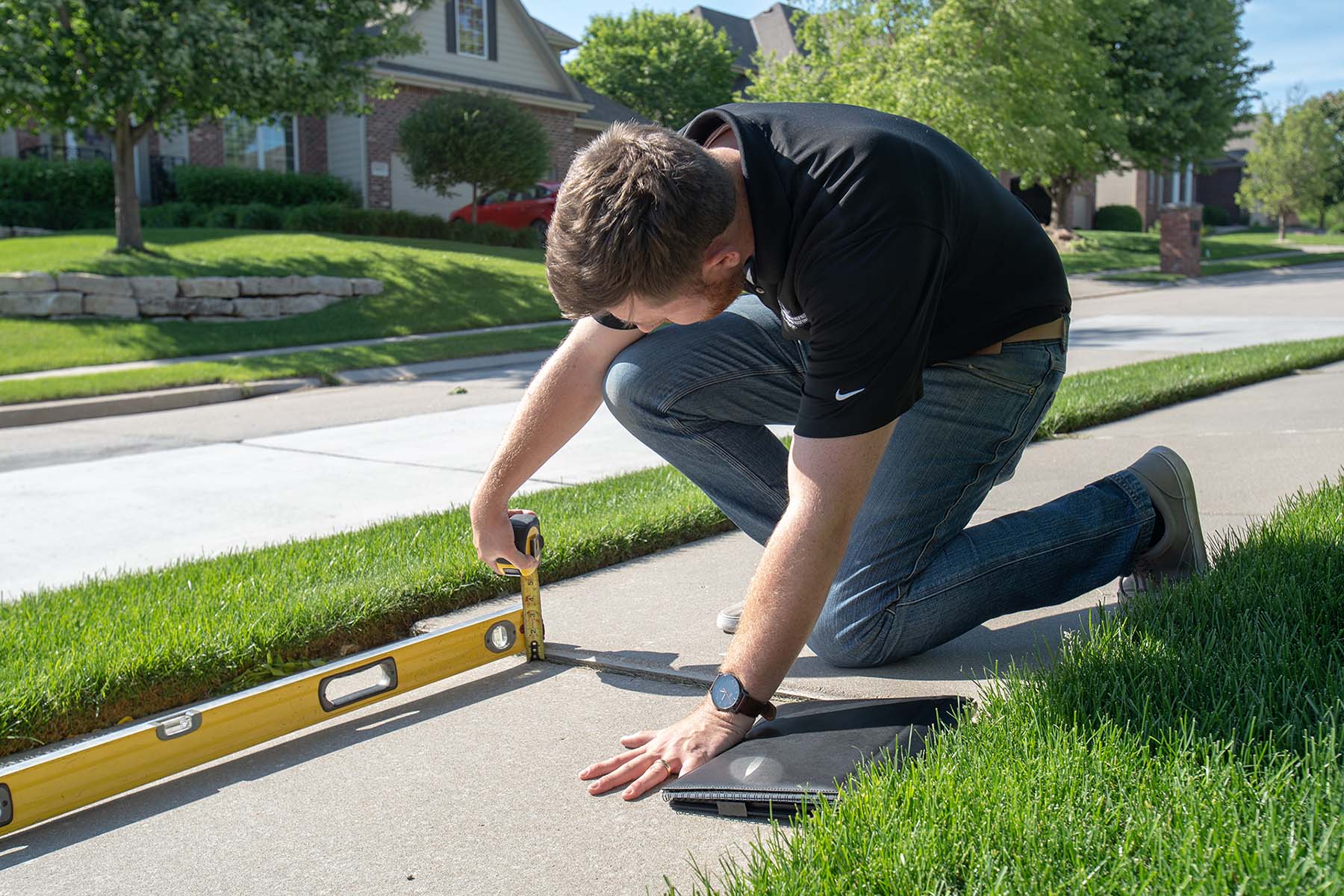Water doesn’t always rush into a basement in dramatic floods—it often seeps in slowly, through foundation cracks, cove joints, or right up from beneath the slab. Over time, even a small amount of intrusion can lead to mold growth, wood rot, or ruined flooring.



At Anchored Walls, we install interior drain tile systems designed to manage groundwater before it ever reaches your basement floor. This system relieves hydrostatic pressure, collects water at the footing level, and directs it safely to a sump pump for removal, providing year-round protection for finished and unfinished basements alike.
Interior drain tile is a powerful, hidden solution for managing basement water intrusion. Installed just below the slab, it quietly directs groundwater away from your foundation to prevent damage.

2. Trench Excavation
Cut a trench along the interior wall, exposing the footing where water pressure builds.
3. Weep Hole Drilling
Drill weep holes every 6 inches to release trapped wall moisture into the trench.
4. Drainboard Installation
Install patented Drainboard to channel wall seepage. Optional membrane can be added for extra protection.
5. Clean Stone Fill
Fill the trench with clean, washed pearock to promote flow and prevent clogging.
6. Plastic Wrap Barrier
Cover the trench with a plastic barrier to contain dust and prep for concrete.
7. Sump Pump Integration
Route collected water to a sump pit, where it’s pumped safely away from the foundation.
8. Concrete Restoration
Re-pour concrete flush to the existing slab, leaving a clean, finished surface.

Interior drain tile is often the most practical and effective waterproofing method when exterior excavation isn’t feasible. Homes with high groundwater pressure, persistent seepage along the cove joint, or moisture rising from beneath the slab can all benefit from this system. It’s particularly useful in basements that are already finished or are being prepared for finishing, where protecting flooring, drywall, and personal belongings becomes a top priority.
This solution also works well for properties with limited exterior access, such as narrow lot lines or homes with extensive landscaping or patios that would make outdoor excavation costly and disruptive. In most cases, sealants or exterior coatings only offer temporary solutions. Interior drain tile provides a more permanent fix. By collecting water at the footing level and routing it to a sump pump, the system stops moisture before it can rise to the surface or damage your basement.
Water problems in the basement don’t always start with standing water. Often, the signs are subtle at first—until the damage begins to spread. If you're noticing any of the following issues, it could be a sign that water is entering below the surface and that a drain tile system may be necessary.

Any of these signs could point to a problem with groundwater pressure around your foundation, and drain tile may be the best way to keep that moisture under control.
For more than 40 years, Anchored Walls has helped families in Iowa & Northern Missouri protect their homes with proven foundation and waterproofing systems. We’re not a franchise—we’re a locally founded and operated company that believes in permanent solutions, done right the first time.
Every drain tile system we install is based on real field experience and built to handle the unique challenges of Midwest soil and weather. Our work is clean, careful, and built to last—because that’s what we’d expect in our own homes.
Don’t wait for another wet basement to show you there’s a problem. Anchored Walls is the local contractor near you trusted for long-term waterproofing solutions. Want to know the cost of interior drain tile for your home? Schedule an inspection today and let our experts design a drainage plan that works—before the next storm hits.



By submitting this form and signing up for texts, you consent to receive text messages from Anchored Walls at the number provided, including messages sent by auto dialer. These may include messages related to estimates, project updates, appointment scheduling, and promotional offers. Consent is not a condition of purchase. Msg & data rates may apply. Msg frequency varies. Unsubscribe at any time by replying STOP or clicking the unsubscribe link (where available) and no further messages will be sent. Reply HELP for help. Information will not be shared with third parties for marketing or promotional purposes. Privacy Policy